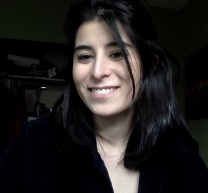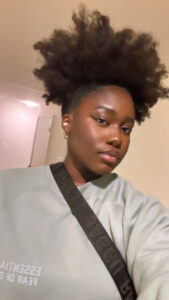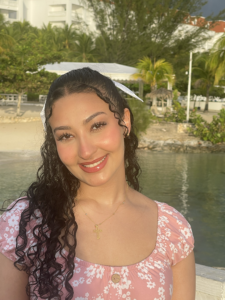People

Cassandra Cavazos
I earned my M.A. in the psychological science program with a concentration in behavioral neuroscience at CSUSB. I worked in Dr. Dennis Amodeo’s lab where my research primarily focused on measuring inflexible behavior in a probabilistic reversal learning task. We utilized a mouse model of ASD using specific serotonin receptor targeting through pharmacological compounds.
Additionally, I spent a summer working in Dr. Melissa Sharpe’s lab at UCLA as a SOMA-fellow where we used optogenetics to study the role of GABAergic neurons in the ventral tegmentum and if these are important in generating a sensory specific expectation of a reward using Pavlovian instrumental transfer (PIT).
These experiences have led me to join Dr. Philip Parker’s lab here at Rutgers, where I am eager to investigate the neural circuitry of the visual cortex and striatum. More specifically, how these neural systems cooperate to produce cue-reward associations and likewise, how this circuitry can ultimately affect flexible learning and decision-making.
Outside of working and studying, I love to hang out with my dogs, Maze and Samson, be outside in nature, listen to music, and enjoy time with friends and family.

Kevin Joseph
I’m an undergraduate at Rutgers University double majoring in Computer Science and Cognitive Science. During my time at Rutgers, I’ve worked as a software engineer in the public sector, but I was always interested by the intersection of machine learning with cognitive neuroscience. I’m currently working as a Research Assistant at the Parker Lab to develop models to enhance experimental protocols and assist with data analysis.
In my free time, I love to thrift, hang out with friends, attend concerts, and work on personal projects.

Amarachi Nwokonko
I am an undergraduate at Rutgers University- New Brunswick majoring in Biological Sciences. My research interests include neurological pathologies – specifically, how such disorders contribute to our spatial processing and perceptions of the world. In the future, I hope to explore the clinical applications of our research. In my free time, I enjoy houseplant shopping, playing the guitar, and traveling!

Jadesola H. Olusina
I earned my Bachelors of Arts in Psychology at Texas State University. While in my program, I worked at a residential treatment center with children diagnosed with various psychological disorders. This led to an interest in wanting to understand and learn about the neural connections and disruptions in them that lead to disorders like autism, depression, anxiety etc. In Parker Lab, I hope to learn to analyze and understand these connections more but also how our visual system(what we see) works to promote the behaviors we see in these disorders.
In my free time, I enjoy traveling, weightlifting, reading non-fiction and listening to music!

Mimi Phan
My research interests are centered on the view that the world is not a quiet place. If you think about it, on a daily basis, we experience a continuous salvo of sensory information. However, we are able to filter out the irrelevant information and rapidly and adaptively respond to our dynamic environment. My research, with Drs. Recanzone, Vicario, Pytte, and Bieszczad, has used primate, avian, and rodent animal models to study the neural correlates of auditory perception and discrimination. With Dr. Samuels, I investigated how does a chronic socially stressful environment exacerbates maladaptive behaviors in a mouse model of neurodevelopmental disorders. In the Parker lab, I am interested in how our everyday sensory experiences guide our behavior and rewire the underlying neural circuitry that subserves these behaviors.

Ashley Younan

My goal is to understand how visually guided behaviors are mediated by neural circuits, and how these circuits change across development and in neurological disorders. Early in my career, my research focused on development and disease in the nervous system. I obtained my B.S. in cognitive neuroscience from Brown University, where I conducted an honors thesis on the development of electrical synapses in the thalamic reticular nucleus with Dr. Barry Connors, under the supervision of Dr. Scott Cruickshank. As a research assistant with Dr. Arnold Kriegstein at UCSF, I worked on a variety of projects on the development of human and mouse neocortex, including cortical synaptic development research under the supervision of Dr. Corey Harwell, as well as a stem cell therapy in a rat model of Parkinson’s disease. As a PhD student with Dr. Anatol Kreitzer, I studied the synaptic basis of motor impairments in the basal ganglia of a parkinsonian mouse model. As a postdoc with Dr. Cristopher Niell, my research focused on vision – specifically, how mice actually use their vision to guide natural behavior, and how neurons in the brain process visual information under such dynamic conditions.
Alumni
Ananya Madhira
Joy Michael Manda